Kirkland Museum of Fine & Decorative Art
Introduction
Text-to-speech Audio
Images
Exhibition at the Kirkland Museum (image from Trip Advisor)
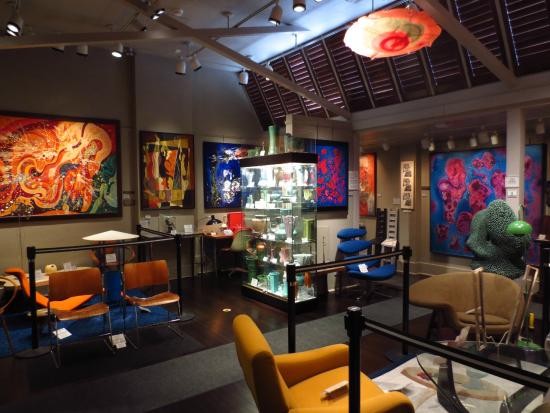
A display of the Kirkland's ceramics (image from Trip Advisor)
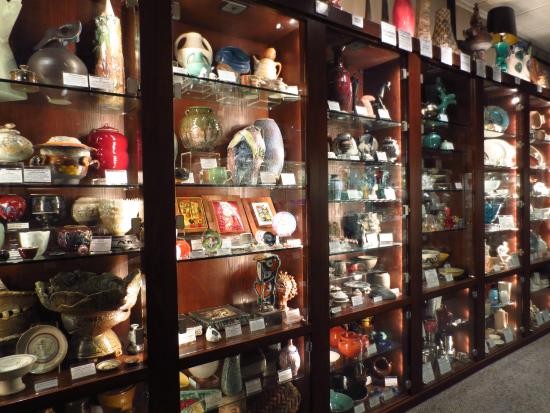
Display featuring a table by Frank Lloyd Wright (image from the Kirkland Museum)
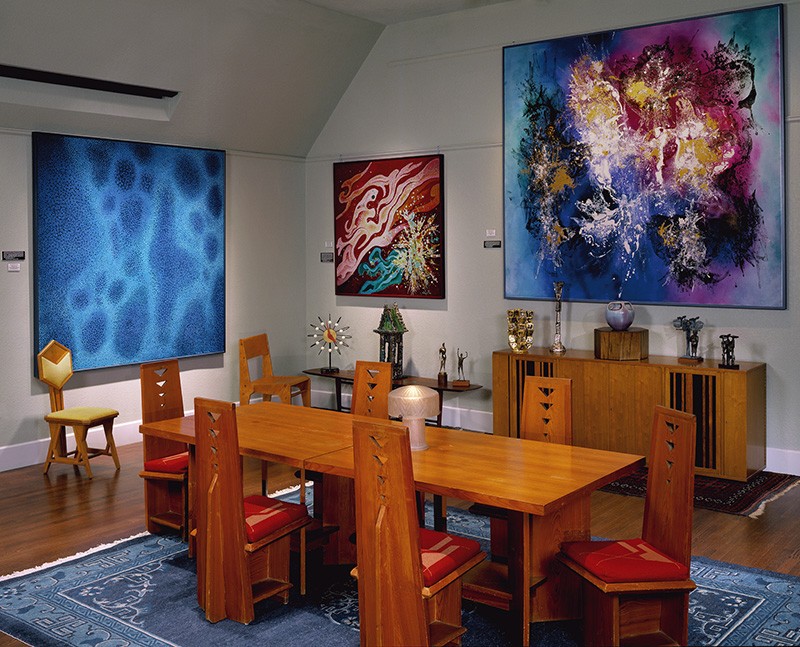
A display of Teco ceramics (image from the Kirkland Museum)
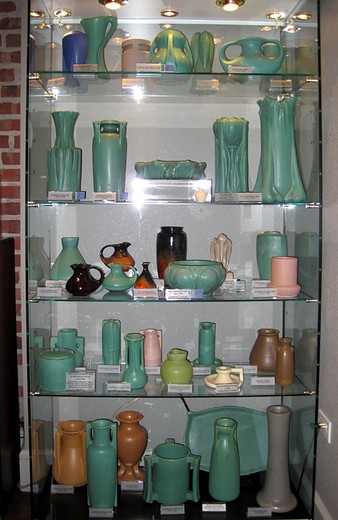
Modern "Vignette" (image from the Kirkland Museum)
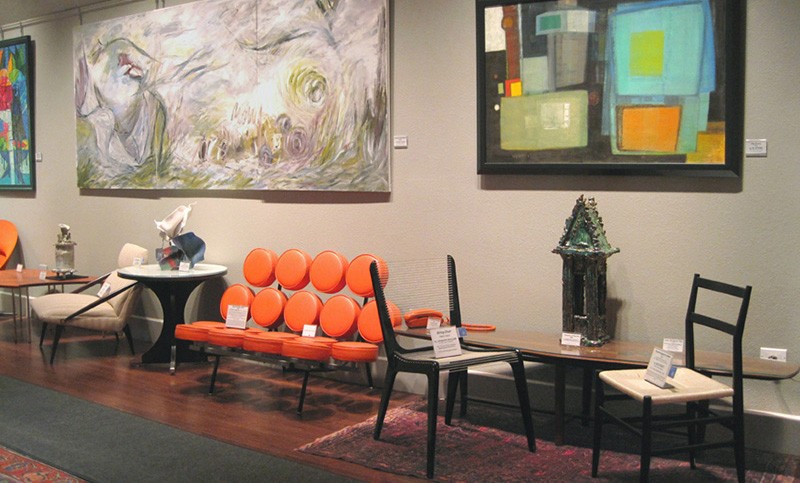
Kirkland's original studio (image from the Kirkland Museum)
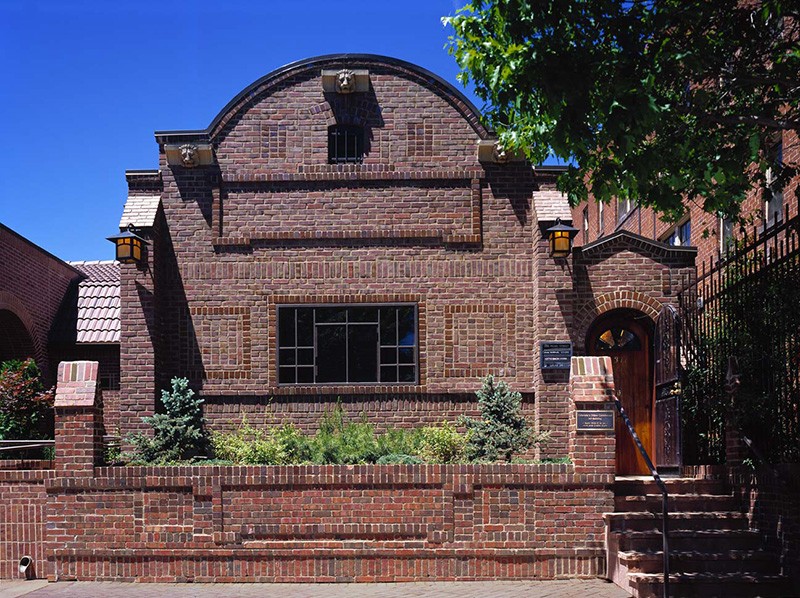
The studio's workroom (image from the Kirkland Museum)
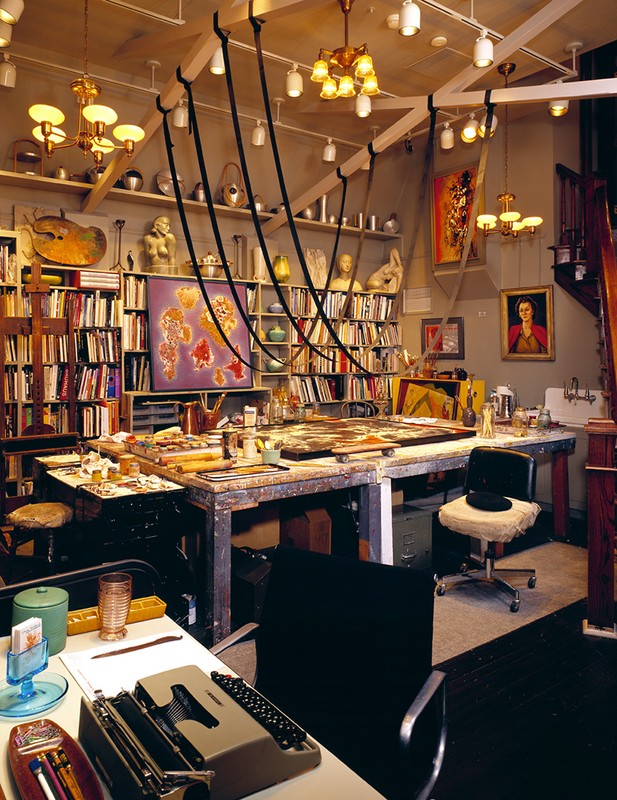
Vance Kirkland with his 1978 painting, Explosions of Energy Near the Sun Fifty Billion Years B.C. (image from the Kirkland Museum)
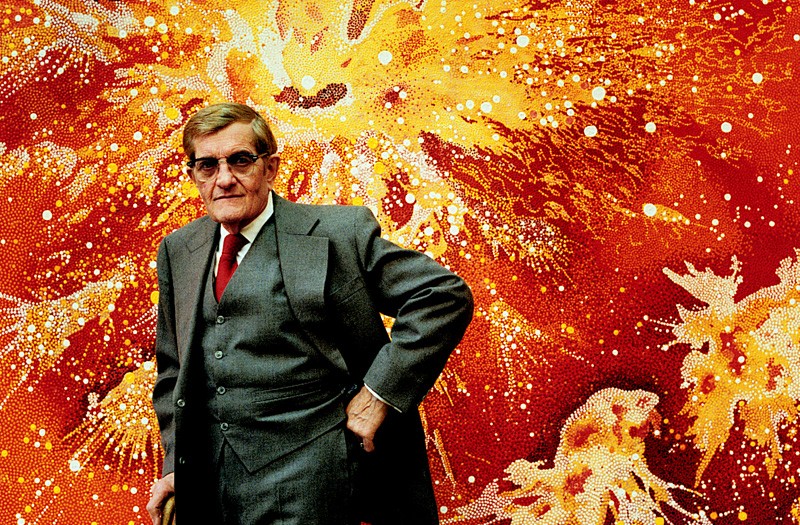
Rendering of the new museum facility currently under construction. The original studio will be moved intact to the new location (image from the Kirkland Museum)
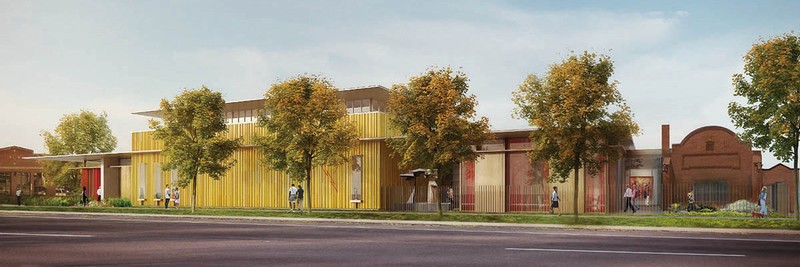
Backstory and Context
Text-to-speech Audio
The Kirkland Museum features the original studio and works of Vance Kirkland (artist, educator, and collector), 6,000 works by Colorado and regional artists dating from 1820-1990, and an international decorative art collection dating from 1875-1990. Curator Hugh Grant's salon style approach to display makes the museum vibrant and unique. Though the museum is closed from May 2016 through Fall of 2017 for relocation, the original studio will be moved intact to the new Bannock Street facility in Denver's Golden Triangle Museum District [1].
Vance Kirkland
Vance Kirkland (1904-1981) was born in Convoy, Ohio, and attended the Cleveland School of Art, the Cleveland School of Education, and Western Reserve University, studying painting, art history, and art education until 1928. In January of the following year, he moved to Denver to take a position as the founding Director of the University of Denver's School of Art at Chappell House. Kirkland left the university in 1932, establishing the Kirkland School of Art (1932-1946) at 1311 Pearl Street and gaining course accreditation through the University of Colorado. Over a hundred students were enrolled. Kirkland was offered a massive salary in 1946 if he would return to his position as Director of the School of Art at University of Denver; he accepted and stayed until 1969. During his term as Director, the School of Art became the university's largest undergraduate school. Kirkland continued to use the building at Pearl Street as his painting studio throughout his career as an educator and afterward, until his death in 1981. His 1,200 paintings are divided into five major periods (Designed Realism, Surrealism, Hard Edge Abstraction, Abstract Expressionism, and Dot Paintings) and over 33 series. He was also active in the local art community, helping establish Denver's Modern Art movement. He revealed his texturing techniques—mixing watercolor with denatured alcohol, mixing oil paint and water, and placing dots of oil paint with wooden dowels over oil and water mixtures—only shortly before his death. Kirkland had a condition known as synesthesia, which causes a person to experience one sense through another; in Kirkland's case, sensing color from hearing music. In 1981, Kirkland died childless and preceded by his wife, Anne Fox Oliphant. He left his estate to his friend Hugh Grant, who curated exhibitions for the artist in his later years [1].
The Studio
Kirkland's Arts and Crafts style studio and art school building were constructed in 1910-1911 as Denver's oldest commercial art building by architects Maurice Biscoe and Henry Hewitt. Originally, the studio was built for English artist Henry Read (1851-1935) as an art school. Read helped found the Denver Artists' Club (later the Denver Art Association and now known as the Denver Art Museum) in 1893. The Club used the Pearl Street studio for meetings from 1911-1922, until they moved to Chappell House (1300 Logan, razed in 1970). The building features northern-facing skylight windows throughout to allow in natural light. It had no running water, used only coal and wood burning stoves for heat, and had electricity in only one room (which became Kirkland's workroom). The rest of the building was lit only with gaslight, oil lamps, and candles. In 1980, Kirkland added three lions (made by the Denver Brick and Terra Cotta Company c. 1900) rescued from the Flatiron Building during its remodel of 1950 [1].
The Museum
As executor of Vance Kirkland's estate, Hugh Grant continued exhibiting Kirkland's work (among others) through the 1980s and 1990s. In 1996, Grant established the Kirkland Foundation to preserve and promote the artist's work and display his collections of decorative art and Colorado fine art. A nearly 9,000 square foot addition designed by Chip Melick and Rachel Rouiller was constructed, and the Kirkland Museum opened on April 2, 2003. The museum's collections now comprise more than 30,000 objects, including 6,000 paintings by 600 different Colorado artists, 200 of them women. The decorative art collection features Arts & Crafts, Aesthetic, Art Nouveau, Galsgow Style, Wiener Werkstätte, De Stijl, Bauhaus, Art Deco, Modern, Pop Art, and Postmodern works. Over 125 architects are represented in the collections. Grant's displays have earned the museum a reputation as a unique experience. He explains his theory on presentation in several key points—the use of salon style display, in which fine art and decorative art are shown together in one room, often with pieces displayed close together (the way they would be in a home); study collection displays, where more objects are displayed per square foot; vignettes of period pieces grouped together (again, as they would be in a period home); and comparative display, in which several styles of design are shown in the same gallery [1].
In 2013, it became apparent that a larger facility was needed to house the Kirkland Museum. The new building (designed by Seattle architect Olson Kundig) at 12th and Bannock in the Golden Triangle Museum District is 38,500 square feet, and set to open in the fall of 2017. With the assistance of Historic Denver, the original studio and art school building will be relocated to the new facility and oriented in the same direction in order to maintain the lighting from the north through the skylight windows [1].
Sources
1. The Kirkland Museum. Official website. Accessed June 23, 2016. http://www.kirklandmuseum.org/
